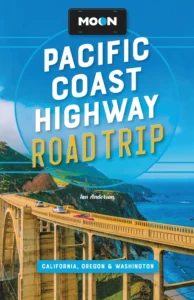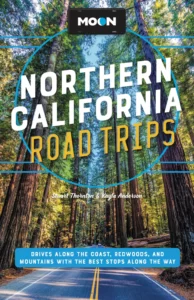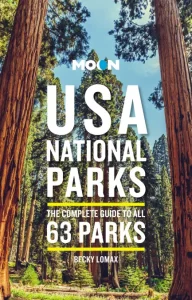Coast Redwoods and Parks
Jedediah Smith Redwoods State Park
The northernmost of the great redwood groves, Jedediah Smith Redwoods State Park covers nearly 10,000 acres of virgin forest along the banks of the Smith River. Stretching east of US-101, and most easily accessible from US-199, the park offers over 20 miles of usually uncrowded hiking trails through the pristine wilderness; it is considered by many the most perfect of all the redwood forests. One of the most enjoyable trails leads through Stout Grove, past tall trees and a number of summertime swimming holes along the Smith River.
There’s also a good campground (800/444-7275) with hot showers. For fans of roadside kitsch, there’s one unique spot along US-101 in the hamlet of Smith River, 15 miles north of Crescent City: Howonquet Village and Resort (707/487-3141), a gift shop, restaurant, campground, and motel along US-101, marked by a grounded but still handsome 1920s yacht, inside which is a gift shop.
Crescent City
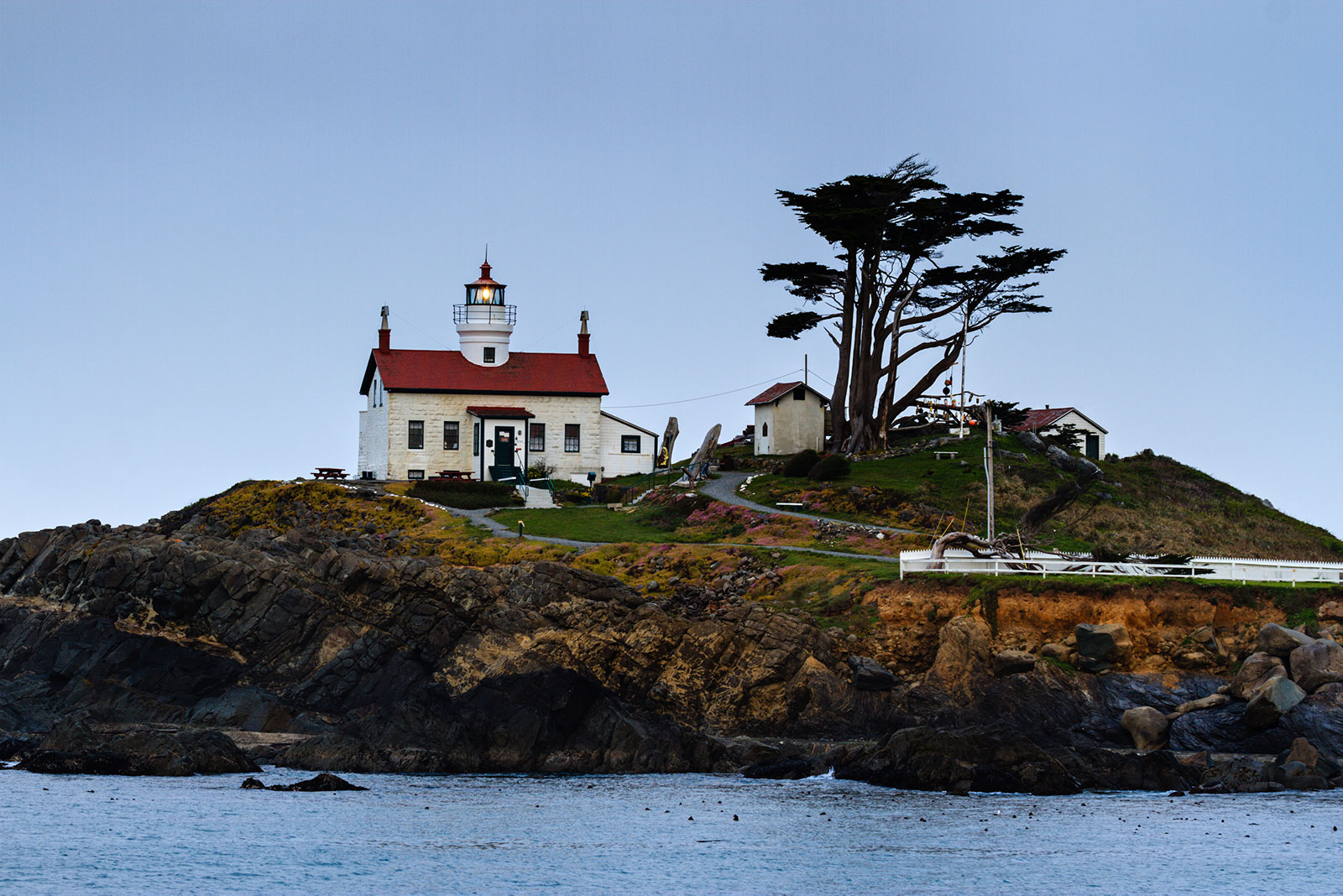
The county seat and only incorporated city in Del Norte County, Crescent City (pop. 6,805) is best treated as a base from which to explore the surrounding wilderness. The foggy weather that helps the redwoods thrive makes the city fairly depressing and gray, and what character it developed since its founding in the 1850s has been eroded by storms; a giant tsunami, caused by the 1964 earthquake off Alaska, destroyed much of the city. The more recent tsunami unleashed by the 2011 quake off Sendai, Japan, was less destructive but drowned one man and caused millions of dollars in damage to boats moored in the Crescent City harbor.
Crescent City includes the familiar lineup of motels and restaurants, plus local options like the CC Diner and Ice Cream (1319 Northcrest Dr., 707/465-5858), on the north side of downtown, a half mile west of US-101. For overnight, one only-in-California option is the Curly Redwood Lodge (701 US-101 S., 707/464-2137, $60 and up), a nicely maintained 1950s motel made from a single sawed-up redwood tree.
Del Norte Coast Redwoods State Park
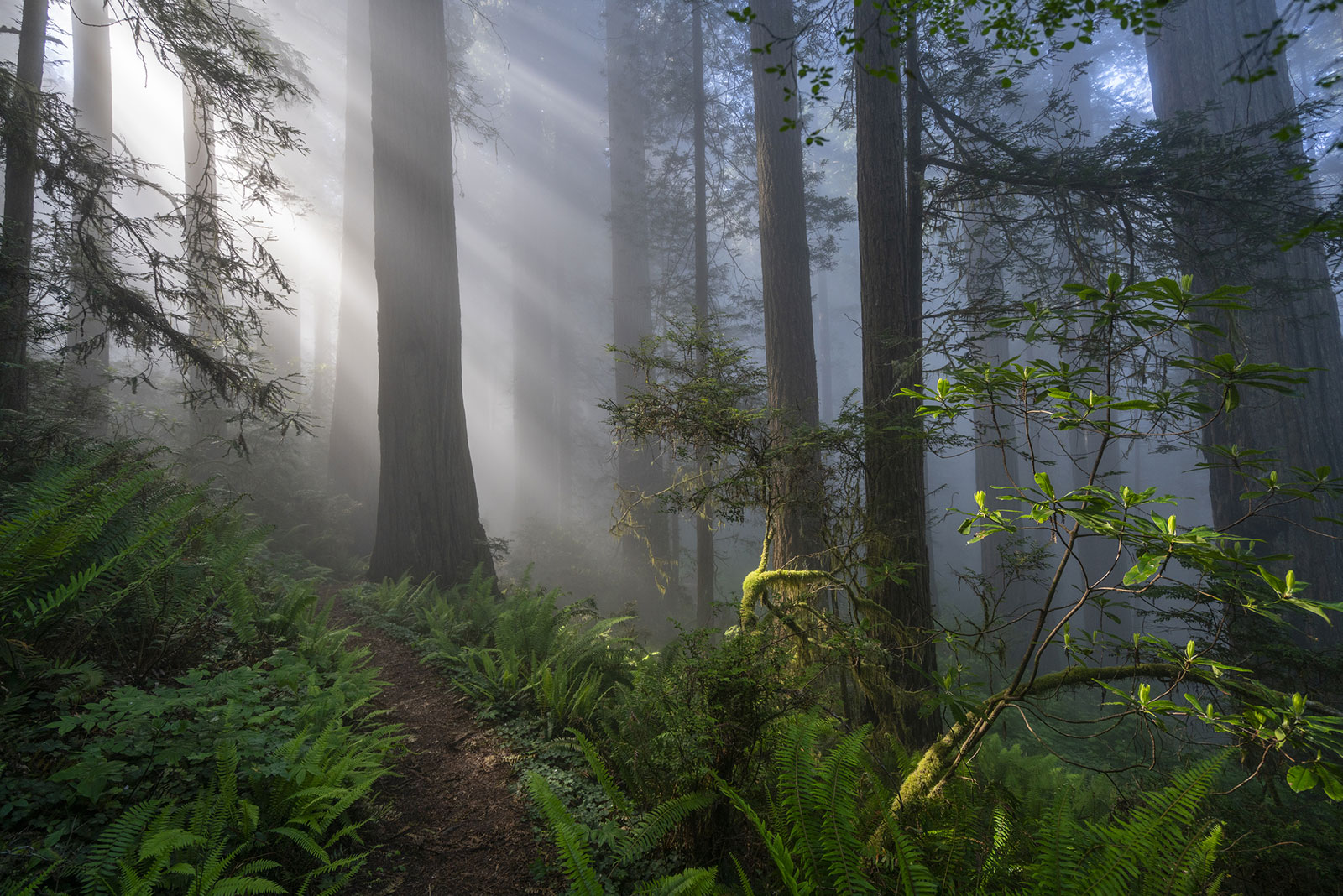
Spreading south from the Jedediah Smith redwoods, Del Norte Coast Redwoods State Park runs along the Pacific Ocean (and US-101) for about eight miles, containing more than 6,000 acres of first- and second-growth redwoods as well as brilliant blooms of rhododendrons, azaleas, and spring wildflowers. Del Norte also protects miles of untouched coastline, the best stretch of which is accessible from the end of Enderts Beach Road, which cuts west from US-101 just north of the park entrance. From here, a 30-mile trail follows the coast to Prairie Creek. The state park area is bounded on the south by an undeveloped section of Redwood National Park.
Trees of Mystery and Klamath
Hard to miss along US-101, thanks to the massive statues of Paul Bunyan and Babe the Blue Ox looming over the highway, the Trees of Mystery (707/482-2251, daily, $16 adults) are literally and figuratively the biggest tourist draws on the Northern California coast. Along the Trail of Tall Tales, chainsaw-cut figures, backed by audiotaped stories, stand in tableaux at the foot of towering redwoods. There’s also a SkyTrail gondola lifting passengers up into the treetop canopy, a huge gift shop, and an excellent, free museum of Native American art and artifacts. Across the highway, Motel Trees (707/482-3152, $85 and up) has standard rooms and a café.
Along the banks of the mighty Klamath River, four miles south of the Trees of Mystery, the town of Klamath (pop. 779) is a brief burst of highway sprawl, supported by anglers who flock here for the annual fall salmon runs—provided there are any fish left to catch. Fisherfolk, walkers, and kayakers all avail themselves of the enduringly popular Historic Requa Inn (707/482-1425, $131 and up), a friendly, comfortable homestead run by members of the local Yurok tribe right on the riverfront. At the south end of Klamath town, take a drive right through the Tour Thru Tree ($5), then cross the Klamath River on a bridge graced by a pair of gilded cement grizzly bears.
Prairie Creek Redwoods State Park
The largest of the trio of north coast state redwood parks, Prairie Creek Redwoods State Park is best known for its large herd of endangered Roosevelt elk, which you can usually see grazing in the meadows along US-101 at the center of the park, next to the main ranger station (707/465-7347) or visitor center (707/488-2039). A modern freeway carries US-101 traffic around, rather than through, the Prairie Creek redwoods. To reach the best sights, detour along the well-signed Newton B. Drury Scenic Parkway, which follows Prairie Creek along the old US-101 alignment through the heart of the park.
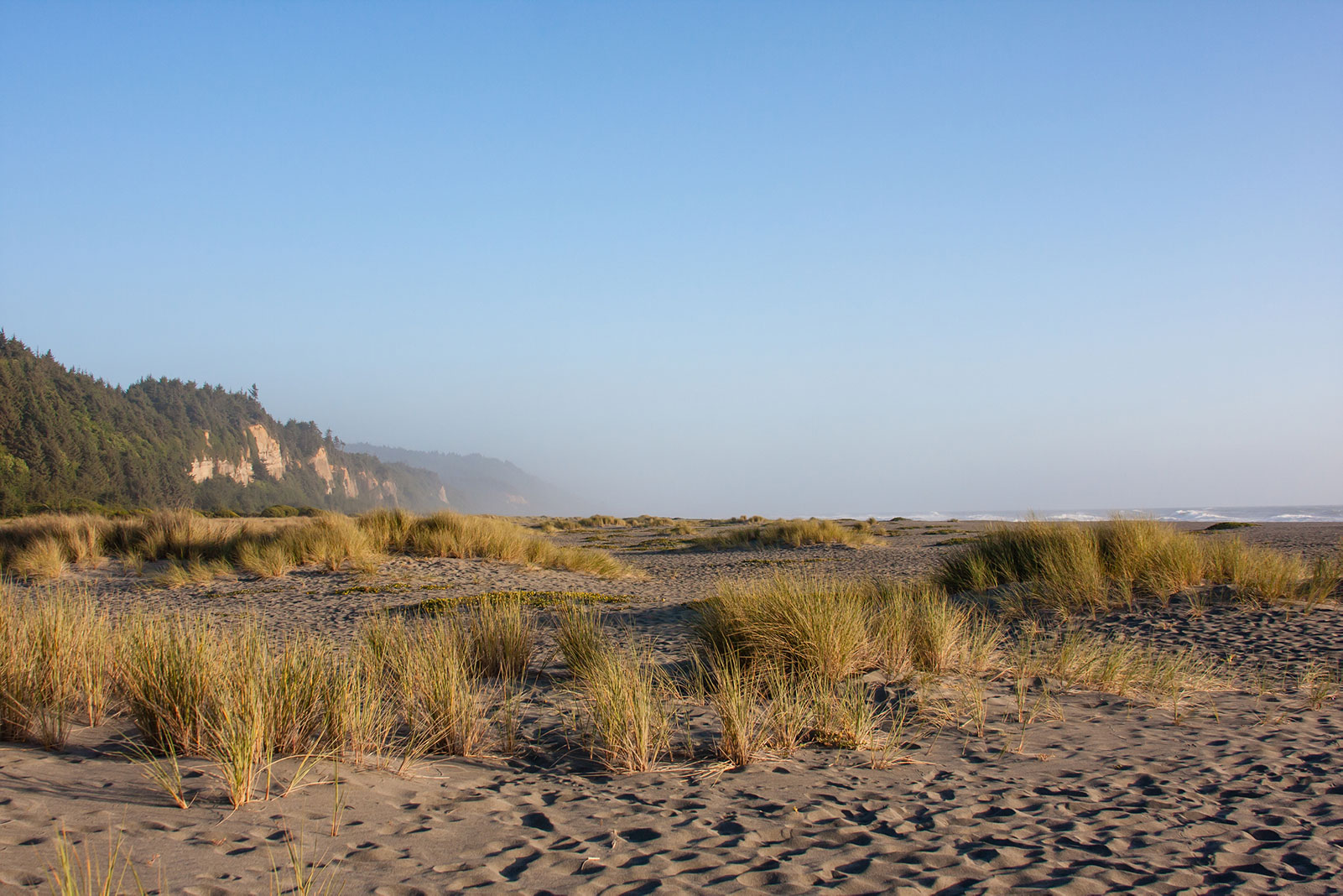
Another elk herd can be spotted among the coastal dunes at Gold Bluffs Beach, which stretches for 11 miles through untouched wilderness; there are trails leading from US-101, or you can follow Davison Road northwest from US-101, three miles south of the ranger station. Apart from the elk, Prairie Creek offers a basic campground in a beautiful setting: the usual mix of old-growth redwood trees, which, more than in the other parks, mingle with dense growths of Sitka spruce and Douglas firs to form a near rainforest of greenery.
Redwood National Park
Established in 1968, and enlarged since then, Redwood National Park protects the last vestiges of the more than two million acres of primeval redwood forest that once covered the entire Northern California coastline. To be honest, alongside the gorgeous groves in the adjacent Smith, Del Norte, and Prairie Creek State Parks, the trees preserved here aren’t by any means the oldest, largest, or most beautiful. In fact, much of the federal parkland is second- or third-growth timber, clear-cut as recently as the 1960s. Though redwoods are the fastest-growing softwoods on earth—growing three to five feet a year when young—the groves here can look rather disappointing compared to those in nearby areas. But they do serve a valuable role as an environmental buffer zone even if they’re not a tree-lover’s pilgrimage site.
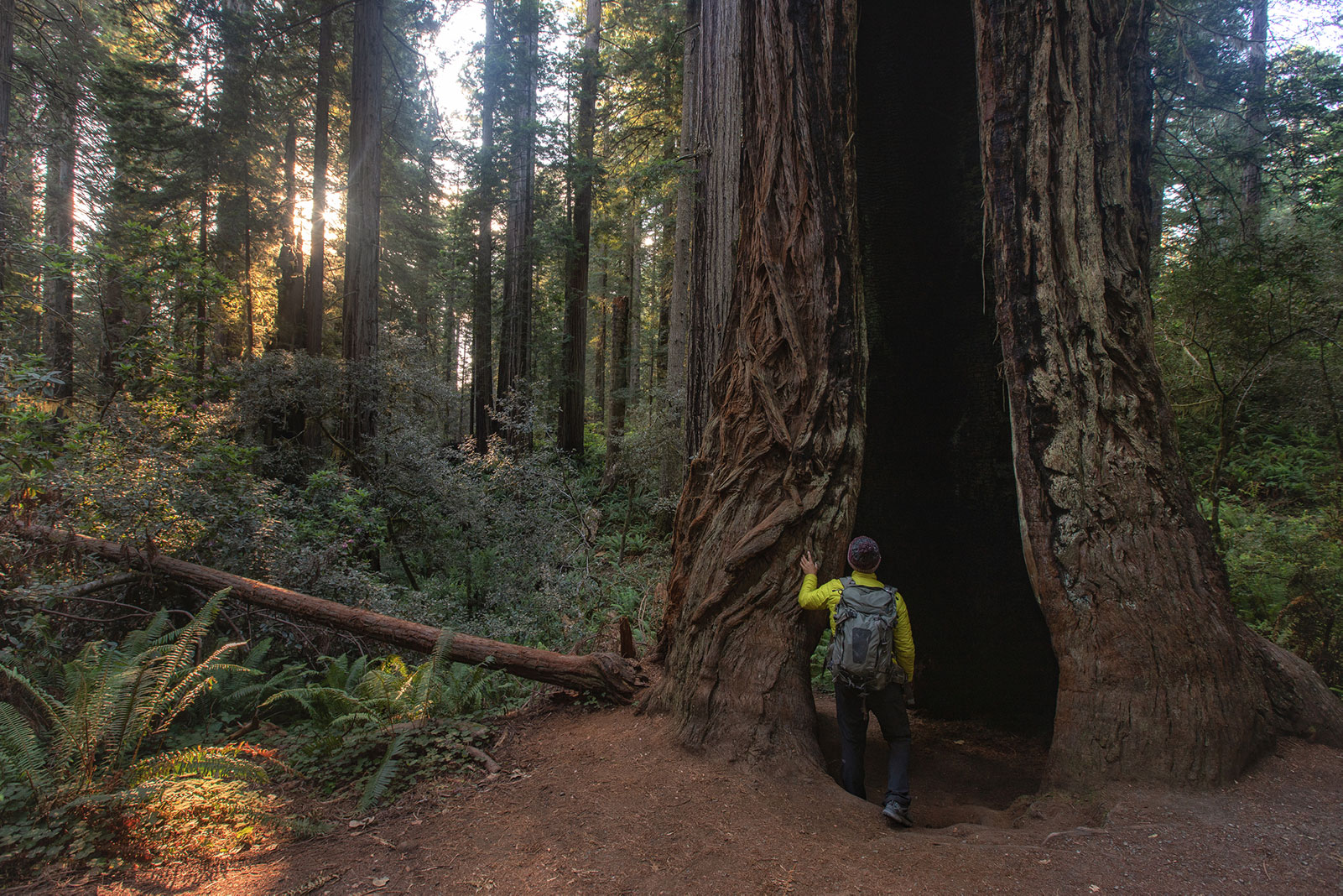
That said, Redwood National Park does hold two special sights, including the Lady Bird Johnson Grove, on Bald Hill Road two miles east of US-101, where the new park was dedicated in 1969. Ten miles farther up this road, and a long hike beyond that, the Tall Trees Grove (free permit required) holds one of the world’s tallest trees, the 360-plus-foot Libbey Tree, whose trunk has been measured at 9.5 feet in diameter.
At the south end of the park, the roadside-strip town of Orick stretches toward the coast, where the main Redwood National Park Thomas H. Kuchel Visitor Center (707/465-7765) stands at the mouth of Redwood Creek.
Patrick’s Point State Park
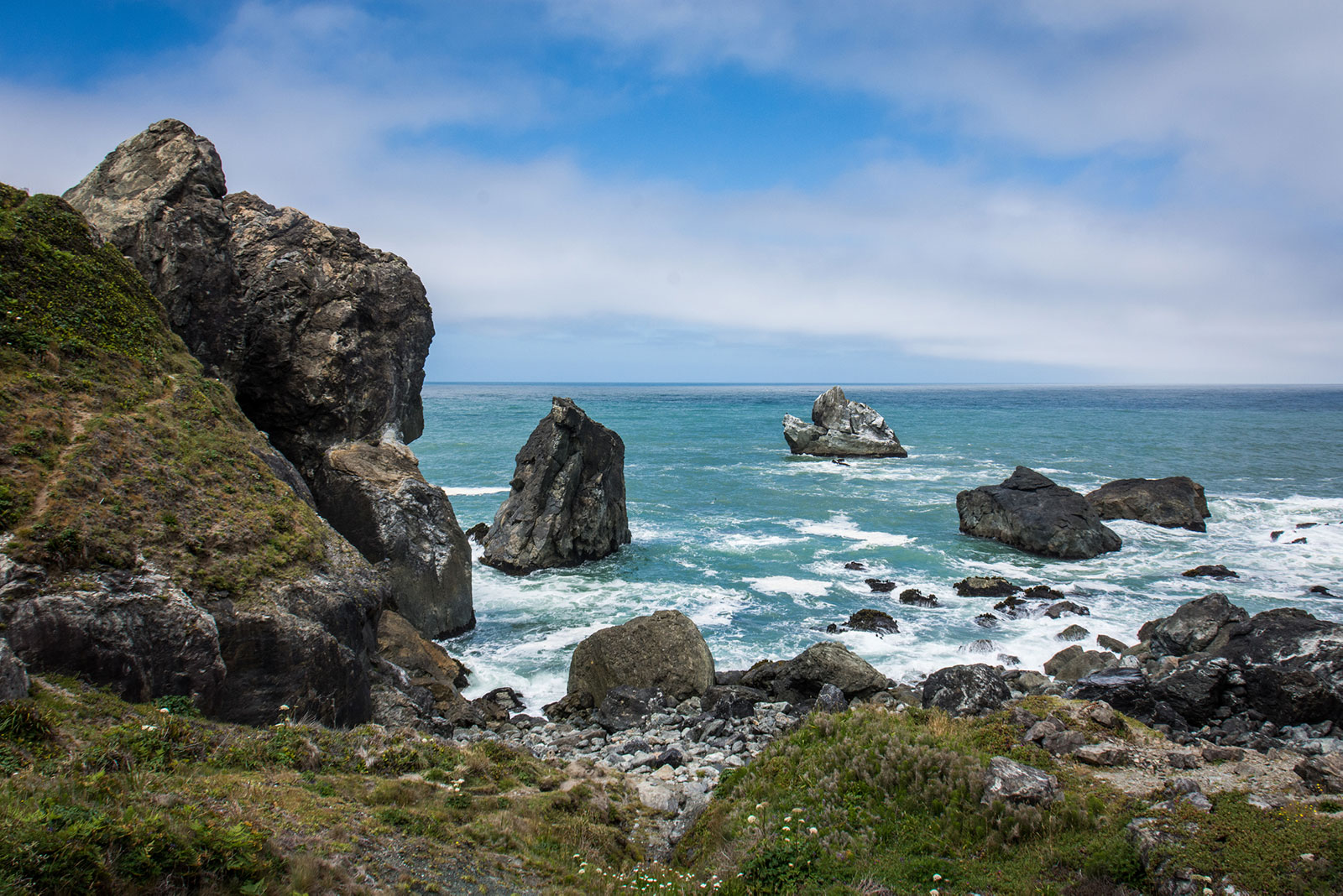
If your idea of heaven is sitting on a rocky headland listening to the roar of the Pacific while watching the sunset or looking for passing gray whales, you won’t want to pass by Patrick’s Point State Park (707/677-3570). Three different promontories at the heart of the park provide panoramic views, while the surrounding acres hold cedar and spruce forests (no redwoods), open pastures bright with wildflowers, great tide pools, a wide dark-sand beach, and three campgrounds (800/444-7275) with hot showers. There’s also the preserved and restored remnants of a Yurok village, a redwood dugout canoe, and a garden of traditional herbs.
Continuing south, US-101 becomes a four-lane freeway along the ocean to Arcata and Eureka, but most of the old US-101 alignment winds along the cliff tops between Patrick’s Point and the small town of Trinidad. Along this road you’ll find some places to stay, like the Trinidad Inn (1170 Patrick’s Point Dr., 707/677-3349, $105 and up), about three miles south of the park entrance. A little farther down this old stretch of US-101 is The Larrupin’ Café (1658 Patrick’s Point Dr., 707/677-0230), which serves up bountiful portions of fresh all-American food in a friendly, homey ambience—it’s California cuisine without the snooty pretense you sometimes find farther south.
Northern California Travel Map















